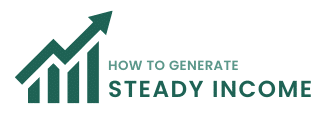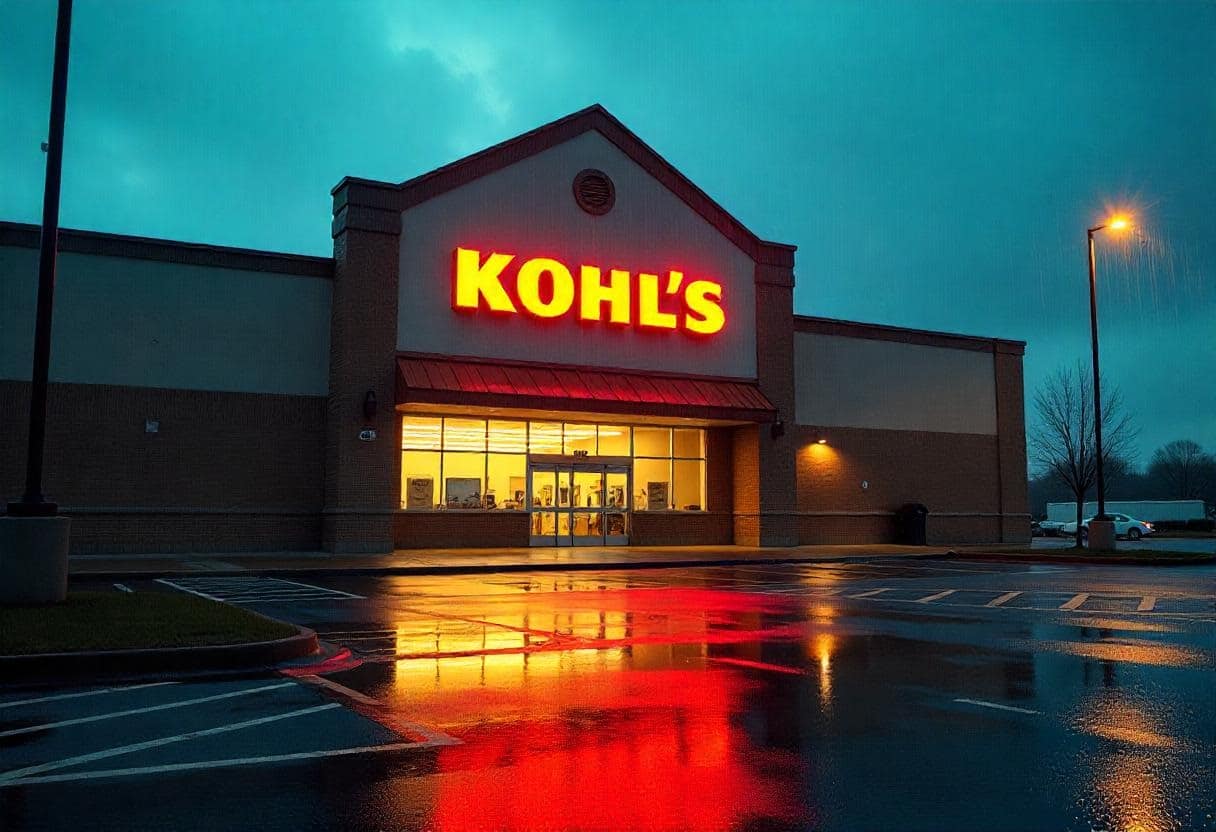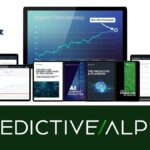As we navigate the turbulent waters of a bear market in April 2025, investors are seeking refuge in strategies that offer stability and income.
Dividend stocks have long been a cornerstone for those looking to weather economic downturns, providing consistent cash flow regardless of market volatility. With the right picks, you can secure your portfolio against losses while positioning yourself for long-term growth.
In this article, we’ll explore seven safe dividend stocks ideally suited for this bear market, delving into their financial strength, dividend reliability, and resilience. Whether you’re a seasoned investor or just starting, these selections offer a blend of safety and opportunity in uncertain times.
Recommended:
 Crisis Alert: Our No. 1 Recommendation in the Face of Financial Turmoil
Crisis Alert: Our No. 1 Recommendation in the Face of Financial Turmoil
There’s no sugarcoating it anymore: For stocks and the economy, things could soon go from bad to worse. But for ONE strategy (outside of stocks), it’s about to become a field day… because it actually works BETTER in a recession and a possible stock market crash. It’s a way to see income and capital gains with LEGAL obligations during this period – on a reliable schedule and with a 93% win rate since the pandemic. Because of these extreme market circumstances, we’re reopening an extraordinary invitation to see it in full here.
Why Dividend Stocks Shine in a Bear Market
Dividend stocks are a proven haven during bear markets. According to a 2010 BlackRock study, dividends accounted for 90% of U.S. equity returns over the past century.
In times of declining stock prices, these payouts provide a buffer, delivering income even when capital gains falter. Moreover, companies with a history of paying and increasing dividends tend to have strong balance sheets and disciplined management—attributes that shine when markets turn sour.
In this bear market, characterized by inflationary pressures, rising interest rates, and geopolitical uncertainty, dividend stocks offer a rare combination of safety and growth potential.
Criteria for Selecting Safe Dividend Stocks
To identify the safest dividend stocks for this bear market, we’ve applied rigorous criteria:
- Dividend Yield: A yield of at least 3%, balancing income with sustainability.
- Payout Ratio: Below 60%, ensuring the company can maintain dividends without straining cash flow.
- Dividend Growth History: At least 10 years of consecutive increases, signaling reliability.
- Financial Stability: Strong cash reserves, low debt, and consistent earnings.
- Sector Resilience: Preference for industries less sensitive to economic cycles, such as utilities, healthcare, and consumer staples.
With these benchmarks in mind, let’s dive into our top seven picks.
1. Johnson & Johnson (JNJ)
- Dividend Yield: 3.2%
- Payout Ratio: 45%
- Dividend Growth Streak: 62 years
Johnson & Johnson, a global healthcare giant, is a quintessential safe haven. Its diversified portfolio spans pharmaceuticals, medical devices, and consumer goods, providing stability across economic cycles.
With a AAA credit rating—higher than the U.S. government’s—JNJ boasts unmatched financial strength. The company’s payout ratio of 45% leaves ample room for reinvestment and future dividend hikes, making it a bedrock for bear market portfolios. In 2024, JNJ’s resilience shone as it maintained profitability despite supply chain challenges, proving its ability to thrive in adversity.
2. Procter & Gamble (PG)
- Dividend Yield: 3.0%
- Payout Ratio: 58%
- Dividend Growth Streak: 68 years
Procter & Gamble, a consumer staples titan, offers products like Tide and Pampers that remain in demand regardless of economic conditions. This defensive nature makes PG a standout in a bear market.
Its 68-year streak of dividend increases is among the longest in the S&P 500, underpinned by robust cash flows and a conservative payout ratio. In Q1 2025, PG reported steady revenue growth, driven by pricing power and brand loyalty, cementing its status as a reliable income generator.
3. Realty Income Corporation (O)
- Dividend Yield: 5.1%
- Payout Ratio: 55%
- Dividend Growth Streak: 29 years
Known as “The Monthly Dividend Company,” Realty Income is a real estate investment trust (REIT) specializing in single-tenant retail properties.
Its tenants, including Walgreens and Dollar General, operate in recession-resistant sectors, ensuring steady rental income. With a yield of 5.1% and monthly payouts, Realty Income offers investors a consistent cash flow stream. Its disciplined acquisition strategy and low leverage make it a safe bet as interest rates rise, a key concern in this bear market.
4. PepsiCo, Inc. (PEP)
- Dividend Yield: 3.1%
- Payout Ratio: 57%
- Dividend Growth Streak: 52 years
PepsiCo’s portfolio of snacks and beverages, including Lay’s and Gatorade, thrives in all market conditions. The company’s global reach and diversified revenue streams provide a cushion against economic downturns.
With a 52-year dividend growth streak, PepsiCo demonstrates a commitment to shareholders, backed by strong free cash flow. In 2024, PEP’s focus on healthier offerings boosted sales, reinforcing its defensive appeal for bear market investors.
5. NextEra Energy, Inc. (NEE)
- Dividend Yield: 3.3%
- Payout Ratio: 50%
- Dividend Growth Streak: 29 years
NextEra Energy, a leader in clean energy, combines stability with growth. Its regulated utility business in Florida provides predictable earnings, while its renewable energy arm capitalizes on the global shift to sustainability.
A payout ratio of 50% and a 29-year dividend growth streak highlight NEE’s reliability. In a bear market, NextEra’s defensive utility base and long-term growth prospects make it a dual-threat winner.
6. AbbVie Inc. (ABBV)
- Dividend Yield: 4.0%
- Payout Ratio: 48%
- Dividend Growth Streak: 52 years (including predecessor Abbott Labs)
AbbVie, a pharmaceutical powerhouse, leans on blockbuster drugs like Humira and its successor Skyrizi to drive earnings. Its 4% yield and low payout ratio offer a compelling mix of income and safety.
With a robust pipeline of new treatments, AbbVie is well-positioned to maintain its dividend growth, even as patents expire. In 2025’s bear market, healthcare’s recession-proof nature makes ABBV a standout choice.
7. Verizon Communications (VZ)
- Dividend Yield: 6.2%
- Payout Ratio: 52%
- Dividend Growth Streak: 19 years
Verizon, a telecom giant, delivers a hefty 6.2% yield, one of the highest among blue-chip stocks. Its essential services—wireless and broadband—ensure steady demand, even in a downturn.
A payout ratio of 52% and significant investments in 5G infrastructure bolster Verizon’s long-term stability. As remote work and connectivity remain critical in 2025, VZ offers both income and resilience for bear market investors.
Recommendation: Marc Lichtenfeld’s Oxford Income Letter
For investors seeking expert guidance on dividend stocks, Marc Lichtenfeld’s The Oxford Income Letter is a valuable resource. As Chief Income Strategist at The Oxford Club, Lichtenfeld offers a proven system for building wealth through dividends, detailed in his bestselling book Get Rich with Dividends.
His service provides access to three model portfolios—Compound Income, Instant Income, and High Yield—averaging 17.53% annual returns since 2013. For just $49 annually (about $0.13 a day), subscribers receive monthly stock picks, weekly updates, and bonus reports, including the “Ultimate Dividend Package.” Backed by a 365-day money-back guarantee, it’s a risk-free way to enhance your bear market strategy. Lichtenfeld’s track record, with readers like Kevin Hannigan growing $381,000 to $2.7 million, underscores its value.
How to Build a Bear Market Dividend Portfolio
Constructing a portfolio with these seven stocks requires a balanced approach:
- Diversification: Spread investments across sectors (healthcare, staples, utilities, REITs, telecom) to mitigate risk.
- Position Sizing: Allocate 10-20% per stock, adjusting based on risk tolerance.
- Reinvestment: Use dividend reinvestment plans (DRIPs) to compound returns over time.
- Monitoring: Track earnings reports and payout ratios to ensure ongoing stability.
A $10,000 investment equally split among these stocks would yield approximately $450 annually, with potential for growth as dividends increase.
Risks to Consider
While these stocks are safe bets, no investment is risk-free. Rising interest rates could pressure high-yield sectors like REITs and utilities.
Economic slowdowns might challenge consumer spending, impacting staples and telecoms. Always review a company’s debt levels and industry trends before investing, as past performance doesn’t guarantee future results.
Recommended:
 “A Crash of Epic Proportions Is Coming – Prepare Now”
“A Crash of Epic Proportions Is Coming – Prepare Now”
50-year stock market legend Marc Chaikin just revealed his “secret weapon”… along with a powerful, little-known strategy that could help you potentially lock in rapid returns – even as markets crumble. Marc says that in the coming months, you are going to need it. So if you have any money in the market, you need to see this now.
Conclusion
In this bear market, the seven dividend stocks—Johnson & Johnson, Procter & Gamble, Realty Income, PepsiCo, NextEra Energy, AbbVie, and Verizon—stand out for their safety and income potential.
With yields ranging from 3% to 6.2% and decades-long dividend growth histories, they offer a lifeline for investors. Paired with expert insights from services like Marc Lichtenfeld’s Oxford Income Letter, you can navigate this downturn with confidence. Don’t let market volatility deter you—secure your financial future with these reliable dividend payers today.
FAQ: 7 Safe Dividend Stocks for This Bear Market
What makes dividend stocks a good choice during a bear market?
Dividend stocks provide a steady income stream, which can offset losses from declining stock prices in a bear market. According to a 2010 BlackRock study cited in the article, dividends have historically accounted for 90% of U.S. equity returns over the past century. Companies that pay consistent dividends often have strong financials and resilience, making them less volatile than non-dividend stocks during downturns.
How were the seven stocks in the article selected?
The stocks were chosen based on five key criteria: a dividend yield of at least 3%, a payout ratio below 60%, a dividend growth history of at least 10 years, strong financial stability (e.g., low debt, consistent earnings), and resilience in recession-resistant sectors like healthcare, utilities, and consumer staples. These factors ensure safety and reliability in a bear market.
Are these dividend stocks completely risk-free?
No investment is entirely risk-free. While these stocks are selected for their stability, risks like rising interest rates, economic slowdowns, or company-specific challenges (e.g., patent expirations for AbbVie) could impact performance. The article emphasizes reviewing debt levels and industry trends to manage these risks.
What is a payout ratio, and why does it matter?
The payout ratio is the percentage of a company’s earnings paid out as dividends. A lower ratio (e.g., below 60%, as used in the article) indicates the company retains enough earnings to sustain and grow its dividend, even in tough times. It’s a key measure of dividend safety, especially in a bear market.
Why is Realty Income called “The Monthly Dividend Company”?
Realty Income Corporation pays dividends monthly instead of quarterly, a rarity among stocks. This provides investors with more frequent cash flow, which is particularly appealing in a bear market. Its focus on recession-resistant tenants like Walgreens supports its reliability, as highlighted in the article.
Can I lose money investing in these stocks during a bear market?
Yes, stock prices can still decline in a bear market, even for stable dividend payers. However, the dividends from these stocks provide income that can cushion losses. Reinvesting dividends through a DRIP (Dividend Reinvestment Plan) can also help you buy more shares at lower prices, boosting long-term returns.
How much income can I expect from a $10,000 investment in these stocks?
The article estimates that a $10,000 investment, equally split among the seven stocks, would yield about $450 annually, based on their average yields (ranging from 3% to 6.2%). This income could grow over time as these companies have histories of increasing dividends.
What’s the benefit of reinvesting dividends in a bear market?
Reinvesting dividends allows you to buy additional shares at lower prices during a bear market, compounding your returns over time. The article suggests using DRIPs to automate this process, enhancing long-term growth potential even when stock prices are down.
Why should I consider Marc Lichtenfeld’s Oxford Income Letter?
Marc Lichtenfeld’s service offers expert guidance on dividend investing, including model portfolios averaging 17.53% annual returns since 2013. For $49 a year, it provides stock picks, weekly updates, and a free “Ultimate Dividend Package,” backed by a 365-day refund guarantee. It’s recommended in the article for investors seeking professional insights in a bear market.
How do rising interest rates affect these dividend stocks?
Rising rates can pressure high-yield sectors like REITs (e.g., Realty Income) and utilities (e.g., NextEra Energy) by making bonds more attractive. However, the article notes these stocks’ low payout ratios and strong fundamentals help them withstand such pressures, though investors should monitor rate trends closely.
Are these stocks suitable for beginners?
Yes, these stocks are beginner-friendly due to their stability, consistent dividends, and well-known brands (e.g., PepsiCo, Johnson & Johnson). The article’s portfolio-building tips—diversification, position sizing, and reinvestment—also make them accessible for novices, especially with optional guidance from services like The Oxford Income Letter.
How often do these companies pay dividends?
Most of these companies (Johnson & Johnson, Procter & Gamble, PepsiCo, NextEra Energy, AbbVie, Verizon) pay dividends quarterly. Realty Income is an exception, paying monthly, which the article highlights as a unique advantage for steady cash flow.
What happens if one of these companies cuts its dividend?
A dividend cut could signal financial trouble, potentially lowering the stock price and your income. However, the article’s focus on companies with long dividend growth streaks (e.g., 68 years for Procter & Gamble) and low payout ratios reduces this risk. Regular monitoring of earnings reports is advised to catch early warning signs.
Can I invest in all seven stocks at once?
Yes, the article suggests diversifying across all seven to spread risk, allocating 10-20% of your investment per stock based on your risk tolerance. This approach balances exposure to healthcare, staples, utilities, REITs, and telecom sectors for a robust bear market portfolio.
How long should I hold these stocks?
These stocks are ideal for long-term holding due to their dividend growth potential and stability. The article implies a buy-and-hold strategy, especially with reinvestment, to maximize income and weather the bear market, though you should reassess if fundamentals weaken.
































